Our view at Stack - Pipedrive is a robust CRM platform, offering automation, contact data collection, webhooks, AI-powered sales assistant, email communications, email marketing, and customisable sales pipeline workflows.
As environmental, social and governance (ESG) issues get more attention, many companies want clear, informative ESG reports. However, figuring out where to begin can be overwhelming.
In this article, you’ll learn how to write a successful ESG report and get real-life examples to inspire you.
What is an ESG report?
An ESG report is a document that gives an overview of your company’s impact and performance in three areas: environmental stewardship, social responsibility and corporate governance.
| Environment |
How your company affects the natural world. The report includes metrics on energy use, waste management, carbon footprint and other factors that contribute to environmental impact. |
| Social | Your company’s interactions with employees, customers, suppliers and communities. The report highlights labor practices, human rights issues, health and safety standards and other social factors. |
| Governance |
Your company’s rules, practices and processes. The report covers board composition, shareholder rights, compliance and risk management. |
What’s the difference between ESG and sustainability reporting?
ESG reports focus on environmental, social and governance metrics that interest investors, regulators and stakeholders. They emphasize how these factors impact the company’s financial performance and long-term risks.
Sustainability reports take a broader approach, covering the company’s overall sustainability strategy, initiatives and outcomes.
They typically detail the company’s environmental and social impact, community engagement, ethical practices and contributions to sustainable development goals (SDGs). As a result, sustainability reports often exceed the requirements of ESG metrics.
Recommended reading
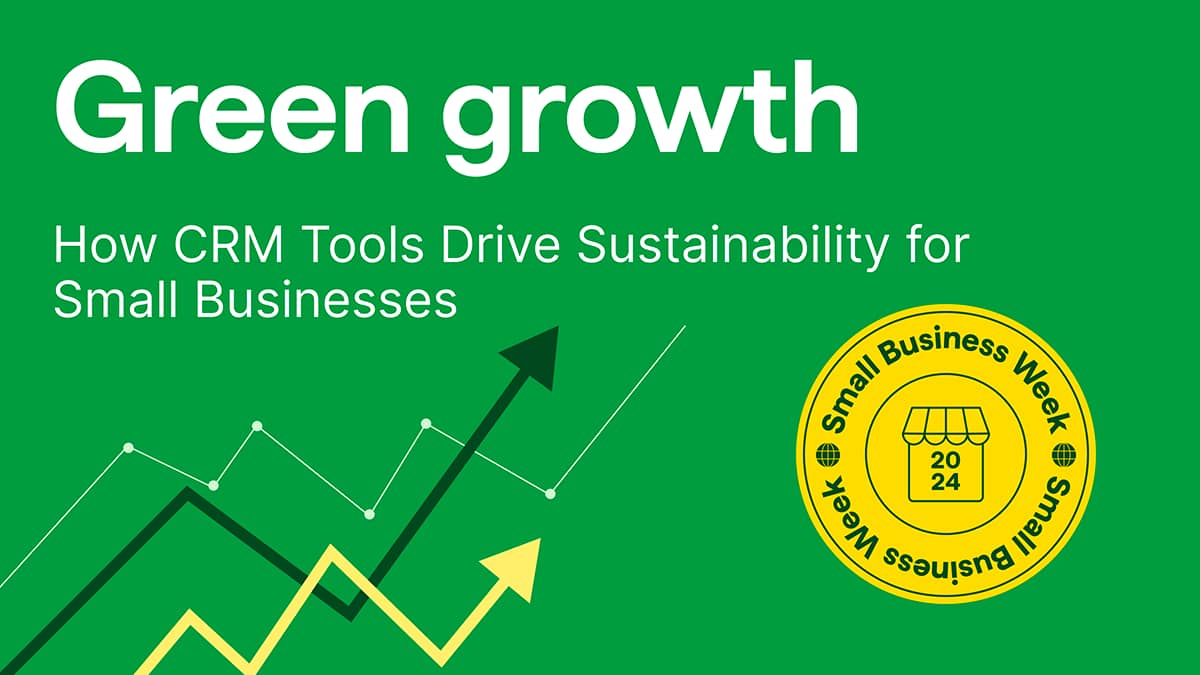
Green growth: How CRM tools drive sustainability for small businesses
Is ESG reporting mandatory?
The United States doesn’t have a federal mandate for environmental, social and governance reporting. However, some regulations require you to disclose specific ESG information and more rules will likely come in the future.
For instance, in March 2024, the Securities and Exchange Commission (SEC) enhanced and standardized public companies’ climate-related disclosures. This new rule aims to improve transparency by requiring SEC-registered companies to include climate details in their official registration statements and reports.
Similarly, the US Federal Supplier Climate Risks and Resilience Rule came into effect in 2022. Its goal is to enhance the climate change resilience of federal supply chains. Suppliers must disclose climate-related risks to their operations, products and services. However, this rule only affects major federal contractors with multi-million dollar annual contracts.
Europe also mandates some ESG reporting by law. The European Union’s Sustainable Finance Disclosure Regulation (SFDR) requires companies in the financial services sector to disclose sustainability information about investments.
Recommended reading

9 impactful eco-friendly business ideas that make a difference
Why do companies do ESG reporting?
Many US companies still do ESG reporting even though it isn’t mandatory. Here are the main reasons why:
To update investors and secure funding
Investors (and potential investors) rely on ESG data to assess long-term risks and opportunities. ESG reporting provides transparency, helping investors make more informed decisions. This transparency can also attract socially responsible investors and secure funding from those prioritizing sustainable business practices.
To comply with regulations
Many countries and regulatory bodies the US works with require ESG disclosures. For example, the Sustainability Accounting Standards Board (SASB) provides industry-specific guidelines that US companies are increasingly adopting for ESG reporting.
Companies can avoid legal repercussions and meet the latest compliance standards by adhering to these requirements.
To build trust with employees, customers and stakeholders
Transparent ESG reporting enhances a company’s reputation by demonstrating its commitment to ethical practices, sustainability and social responsibility. With up to 69% of employed adults wanting their companies to invest in sustainability efforts and 80% of consumers willing to pay more for sustainable products, being upfront is crucial.
To increase accountability
ESG reporting holds companies accountable and ensures they take actionable steps to improve their environments, communities and corporate structures. With increased accountability, companies can drive internal improvements and align their business practices with broader societal values.
Free ebook: How to tell your brand story
Get our ebook outlining the five steps to developing your brand’s unique story
What to include in your ESG report
Let’s look at the key elements that an ESG report should include. Keep in mind that this isn’t a definitive list. Use it as a foundation and tailor your report to organizational needs and goals.
Executive summary
The first section summarizes your ESG priorities and how they align with the overall business strategy. Some companies deliver the executive summary as a letter from the CEO. It may also touch on improvements and setbacks that the company is still dealing with from previous years.
This section generally provides a short snapshot of the most significant points. It should mention highlights and notable accomplishments, such as reduced carbon emissions or new philanthropic initiatives.
Environmental performance
This section focuses on your company’s impact on the environment and its efforts to mitigate adverse effects on ecosystems and biodiversity. It includes metrics on energy consumption, waste management, water usage, emissions and sustainability.
Discuss specific company programs, like recycling efforts or sustainable sourcing. The report should also outline specific targets, such as reducing water usage by 30% over the next five years.
Social performance
This section outlines key areas like health and safety practices, community engagement, diversity and inclusion (DEI) and employee well-being. Again, you’ll compare initiatives with previous years and explain how they relate to your performance objectives and strategies.
Governance performance
The governance report covers how you manage and operate your company, focusing on board composition, shareholder rights, compliance and business continuity. It should highlight ethics, anti-corruption and transparency policies while describing how the company identifies and mitigates risks.
Metrics and KPIs
Throughout the report, you’ll cover metrics and key performance indicators (KPIs) that show how you’re progressing toward your goals or why you haven’t been able to meet them. You should select metrics that align with your ESG priorities, like carbon footprint, employee turnover rate or board diversity.
Use historical data to show progress and trends over time. You can also compare your metrics to industry standards or competitors to give context to your performance.
Recommended reading

How to achieve salesforce diversity (and why it matters)
How to write a powerful ESG report
Let’s examine some practical tips and strategies for crafting an impactful and thorough ESG report that resonates with your stakeholders.
Define your objectives and scope
Defining your objectives and scope is the foundational step that guides the entire ESG reporting process. It will ensure your report is purpose-driven, relevant and targets the right audience. For example, your objectives could be:
-
Ensuring regulatory compliance
-
Providing transparency to attract and retain investors
-
Demonstrating corporate responsibility
-
Identifying areas for improvement and tracking progress over time
List your specific objectives in order of importance. Define the scope of your report, setting boundaries on what it will cover. The scope includes the reporting period, geographic locations and business units that will be part of the final document.
For instance, your annual report might focus on ESG issues in North America for the fiscal year 2024–2025, covering manufacturing, logistics and corporate offices.
Consider your target audience and gather data
With your objectives and scope in place, it’s time to consider your target audience. Who are the primary and secondary stakeholders reading your ESG report? What information will you need to include that’s relevant to this audience?
Your target audience might include:
-
Investors. Focus on financial performance and future sustainability plans
-
Employees. Highlight employee engagement, benefits and workplace safety
-
Customers. Showcase product safety, ethical sourcing and customer satisfaction
-
Regulators. Emphasize compliance with regulatory standards and reporting guidelines
As soon as you know who your report is targeting, start collecting data. Both quantitative and qualitative research are essential for a credible ESG report.
Quantitative data could include metrics on energy consumption, emissions or water usage. On the social side, qualitative data might contain information about diversity, equity and inclusion (DEI), health and safety or community engagement.
Finally, include governance data about board composition, executive compensation, compliance and risk management.
Review regulations and follow established reporting frameworks
Ensure you’re up to speed with the latest regulations around ESG reporting. As mentioned, different countries and regions have distinct ESG reporting requirements. Start by identifying the rules for your business based on its location, industry and size.
Here’s what to look for:
-
Local and international regulations. Research local and global frameworks governing ESG reporting in your operating regions. If you’re in the US, familiarize yourself with the SEC’s updated disclosure requirements. There are also new rules in Europe, including the Corporate Sustainability Reporting Directive (CSRD).
-
Industry standards. Identify any industry-specific guidelines that apply to your business. For the latest updates, visit sites like International Comparative Legal Guides (ICLG) and PricewaterhouseCoopers (PwC).
-
Ongoing compliance. Stay up-to-date on new changes and regulations that might affect your reporting requirements.
Well-established ESG reporting frameworks include the Global Reporting Initiative (GRI), the Task Force on Climate-related Financial Disclosures (TCFD), the Carbon Disclosure Project (CDP) and the UN Sustainable Development Goals (SDGs).
Each ESG framework has specific requirements about what information to include in a report. Following these frameworks can give your report more structure and clarity, ensuring you meet current reporting standards.
Create a user-friendly design
An ESG report can be a large document with a lot of information, so it’s essential to make it easy to follow and simple to navigate. Here are some tips for designing a user-friendly ESG report:
-
Offer a detailed table of contents for easy navigation
-
Avoid technical jargon and use straightforward language
-
Employ summaries and bullet points to condense complex information
-
Use a consistent layout and structure for each section
-
Add hyperlinks and interactive charts to your digital report
-
Include a glossary to help readers understand industry-specific terms
Note: Use visual elements to make your data more accessible and engaging. Present any statistics with charts, graphs and infographics. Also, include relevant images and icons to break up your text and add visual interest. Brand any visuals you add to increase the professionalism of your document.
3 ESG reporting examples
Let’s look at three ESG reports and what each one does well.
1. FedEx ESG Report 2023
FedEx’s 2023 ESG report shows several strengths that reflect the company’s commitment to transparency and sustainable practices.
One of the highlights is a strong letter from the CEO.
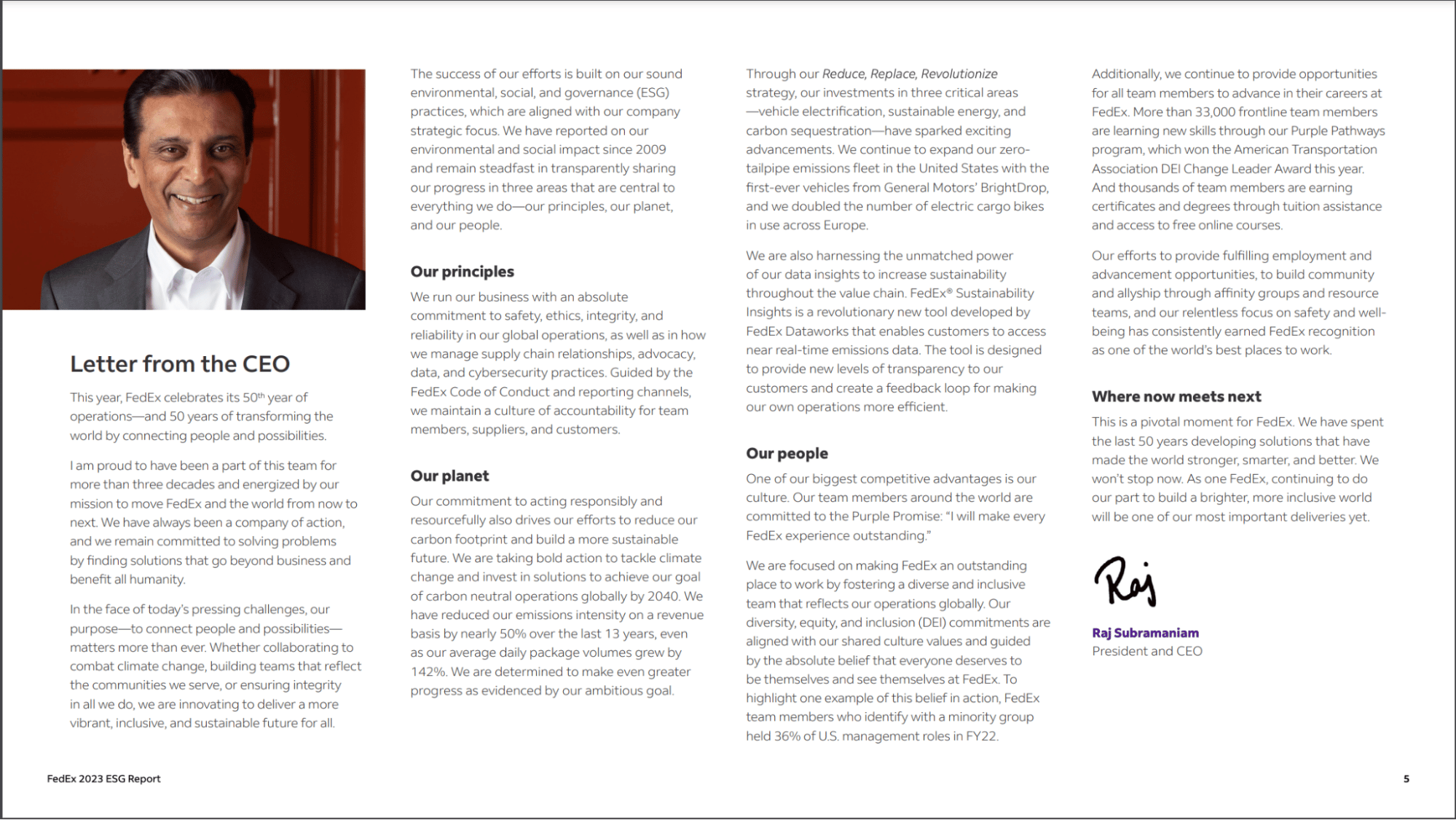
It sets the tone for the report and spotlights the company’s dedication to its ESG goals.
The report then examines FedEx’s 50-year history of action, emphasizing the company’s commitment to addressing global challenges and ensuring a sustainable future.
It provides a wealth of data, including detailed metrics on carbon emissions, energy consumption and natural resources. Charts and infographics illustrate the year-over-year changes in carbon emissions, showcasing FedEx’s progress toward its sustainability goals.
For example, here’s FedEx’s infographic on how they’re transitioning to become carbon neutral:
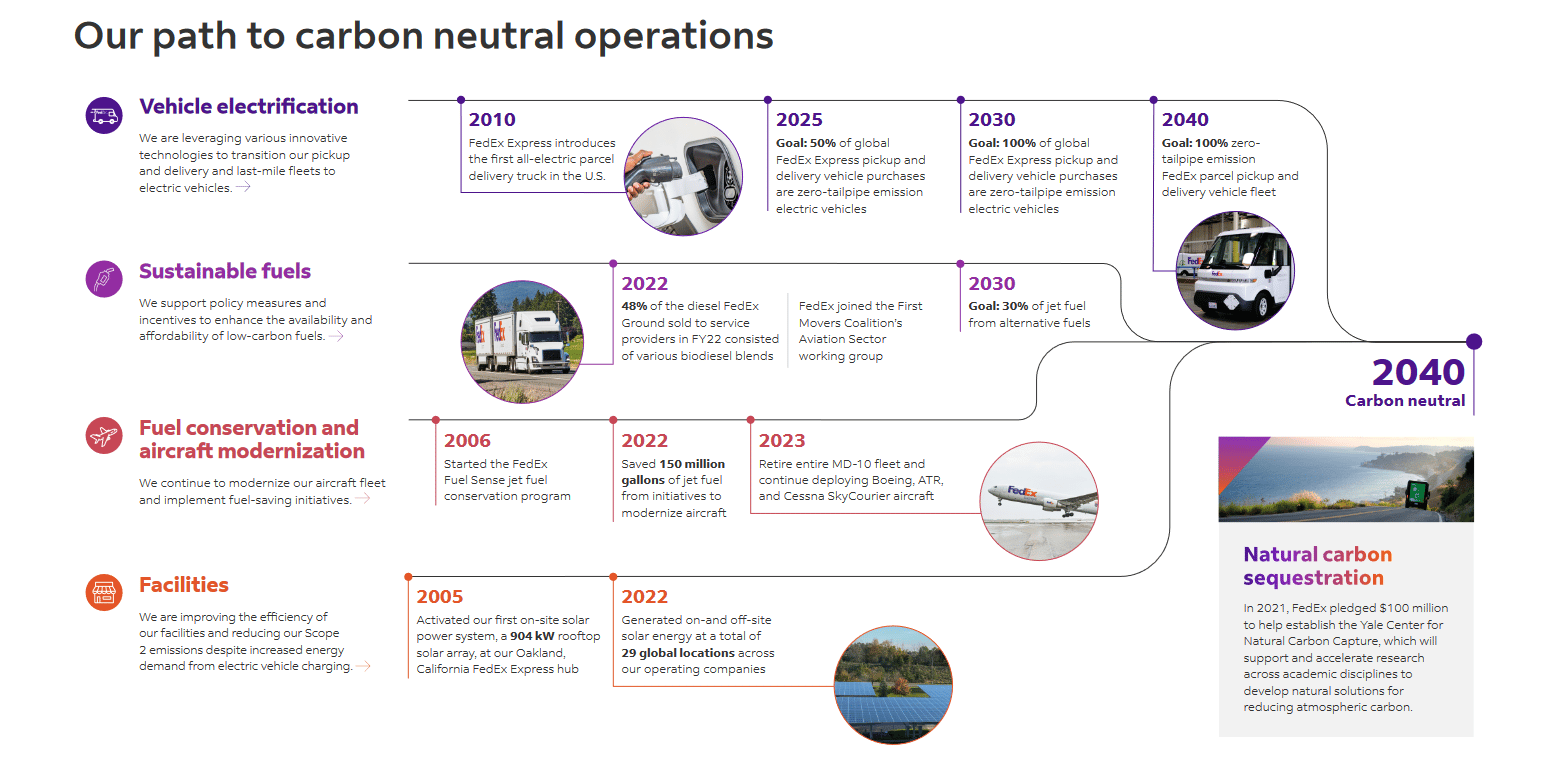
Finally, FedEx shows its alignment with global regulations. It explains how its ESG performance complies with global frameworks like TCFD and ensures the report meets GRI standards.
2. Walmart’s Environmental, Social and Governance Highlights
Walmart’s 2023 ESG report is another large document reflecting the company’s sustainability and corporate social responsibility (CSR) efforts.
The report offers extensive data on Walmart’s ESG strategies and approach. For instance, it highlights the company’s progress toward its Project Gigaton initiative, which aims to remove one billion metric tons of emissions from its global supply chain by 2030.
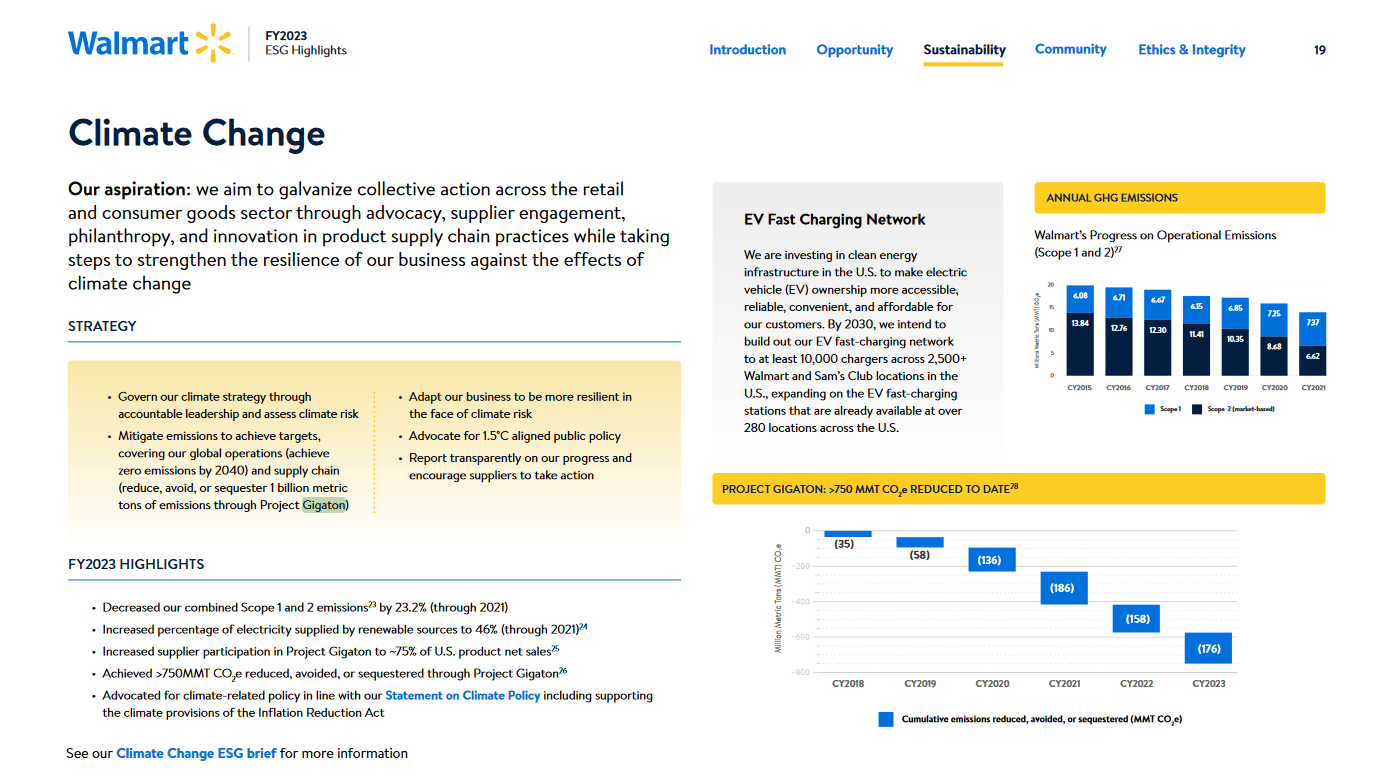
It also shares data on Walmart’s social goals in areas like increasing wages, offering educational opportunities and advancing diversity in the workplace.
For example, here’s a page from Walmart’s report detailing key statistics about its Live Better U initiative, which lets employees access 70 educational programs in areas like business management:
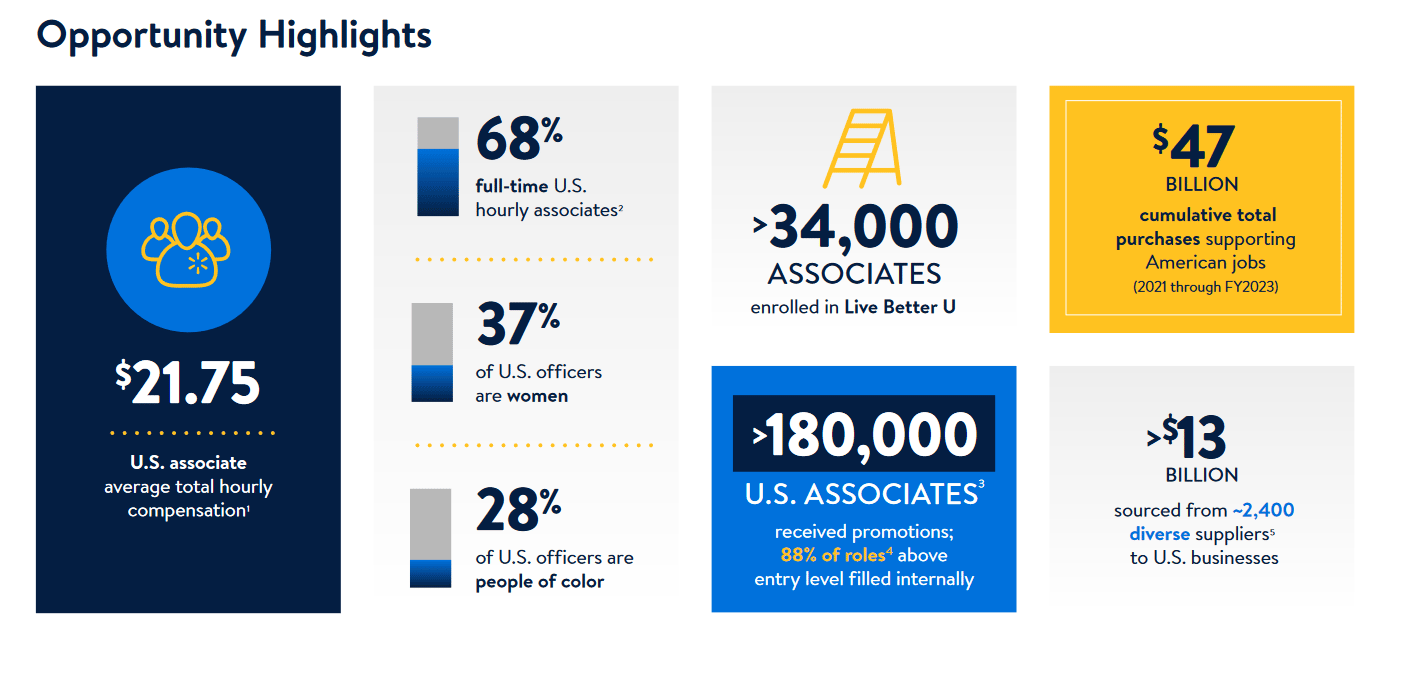
Walmart’s ESG report is also visually appealing and easy to navigate, with graphs, infographics and other elements that make it more accessible.
3. Google’s ESG Report 2023
Google’s 2023 Environmental Report focuses on how its products can encourage individuals and companies to make more sustainable choices. It also highlights how Google is transitioning to more resilient, low-carbon systems to reach its sustainability targets.
Google opens the report with a page of ESG highlights:
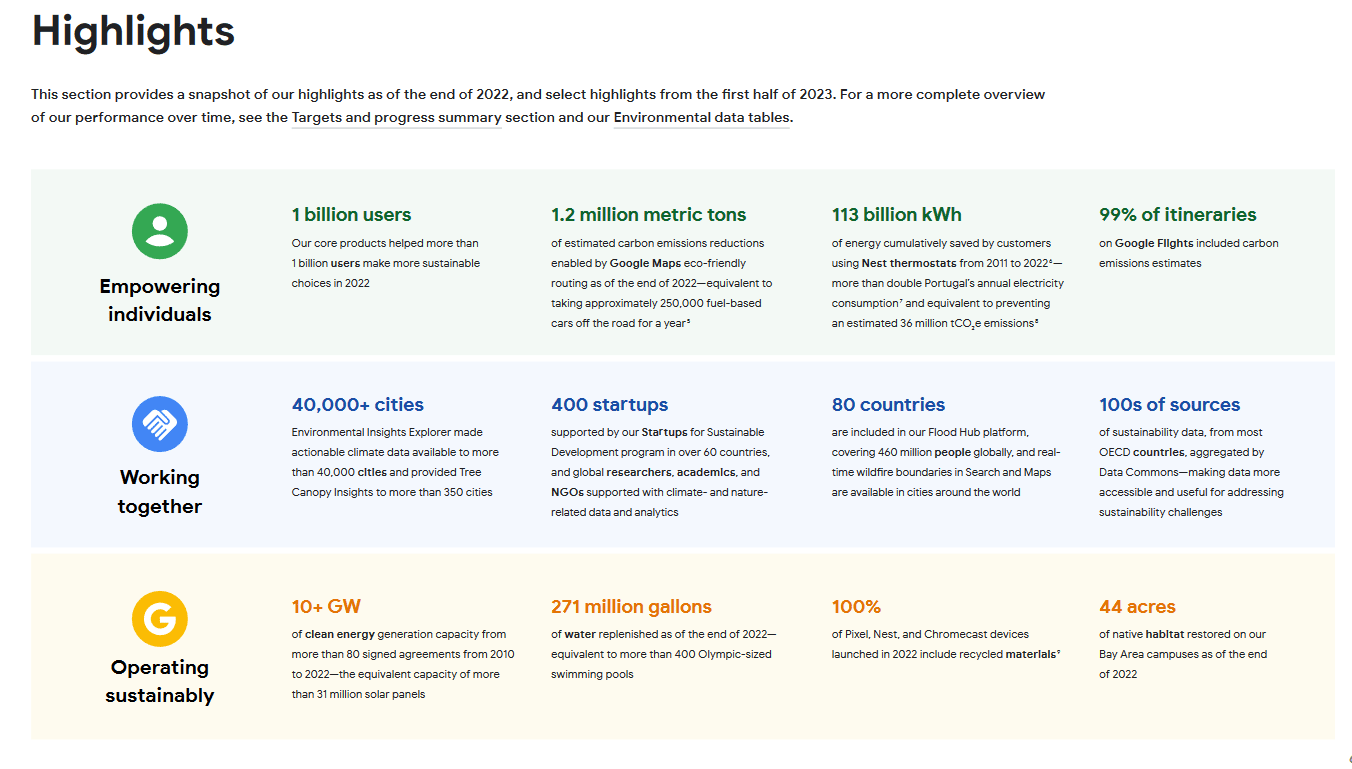
This page communicates the goals the company is working toward and offers a high-level overview of its progress.
The report provides additional information about Google’s efforts to reduce greenhouse gas emissions, including its carbon-neutral operations since 2007.
Google also explains various innovative sustainability initiatives in renewable energy and describes its use of artificial intelligence to improve energy efficiency in data centers.
The report summarizes projects thoroughly and shows tangible results to back up the company’s performance.
Recommended reading

A simple guide to value chain analysis
Final thoughts
ESG reporting can be challenging to navigate. With these best practices, you can craft a clear, concise report that complies with regulations and provides stakeholders with necessary information.
Use Pipedrive to manage your resources, workflows and processes while enhancing sustainability and growing your business. Sign up today and start making a positive impact
If Pipedrive is of interest and you'd like more information, please do make contact or take a look in more detail here.
Credit: Original article published here.
